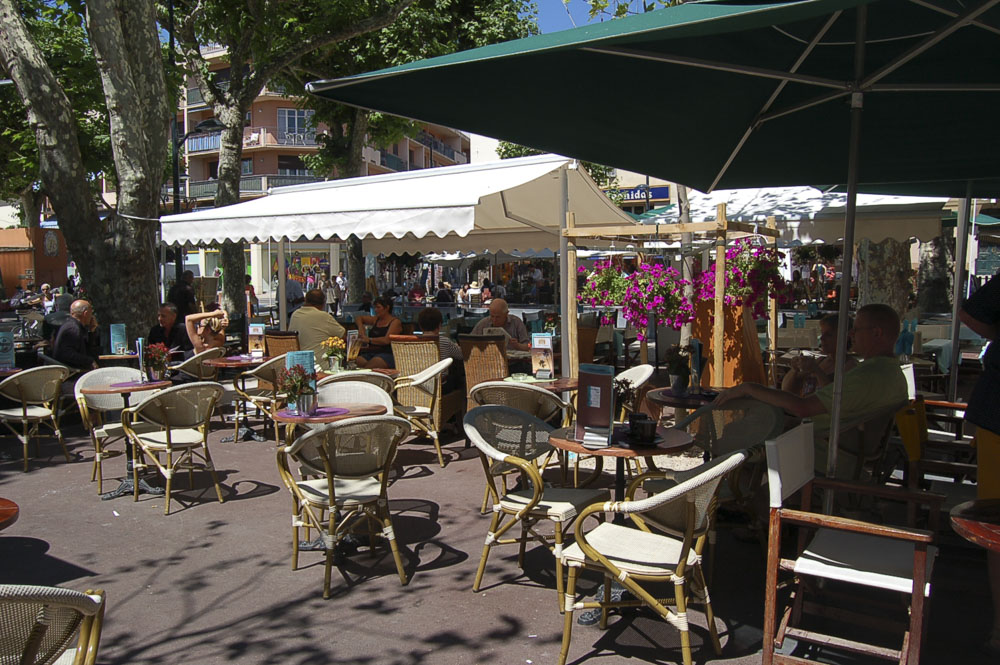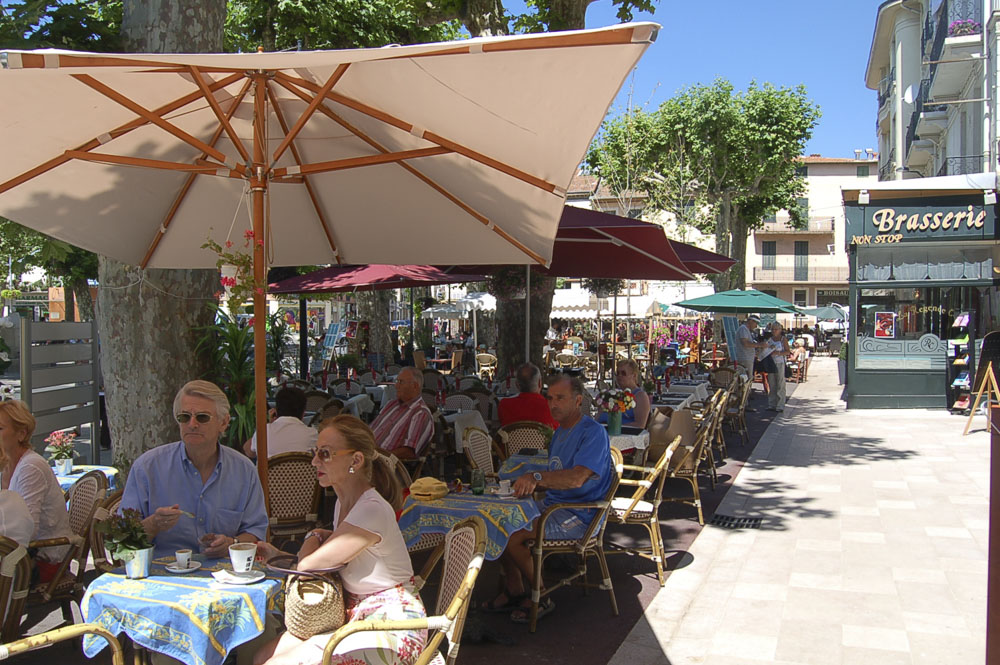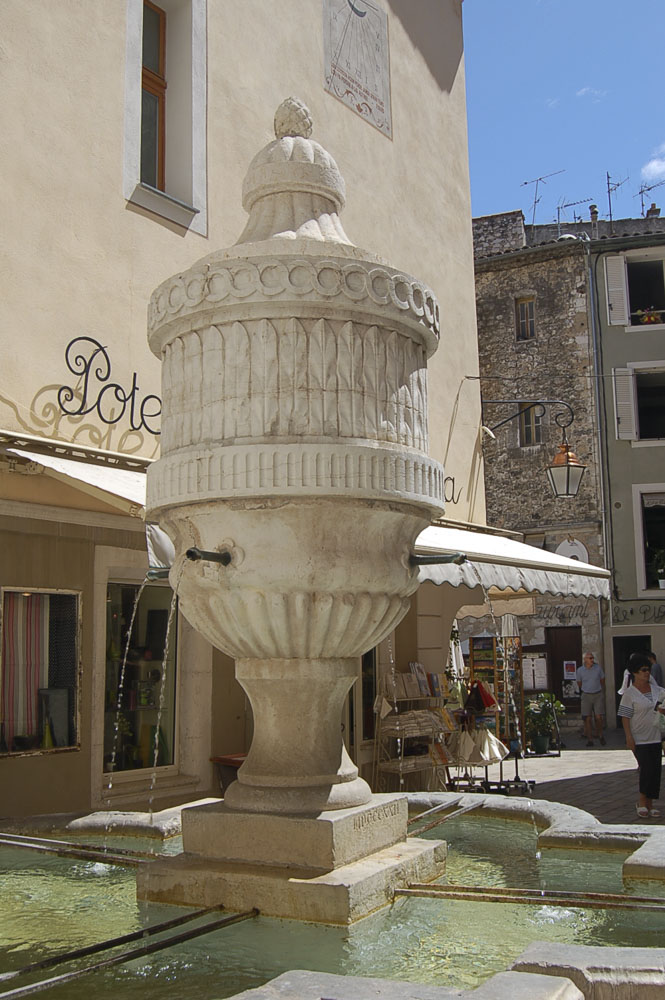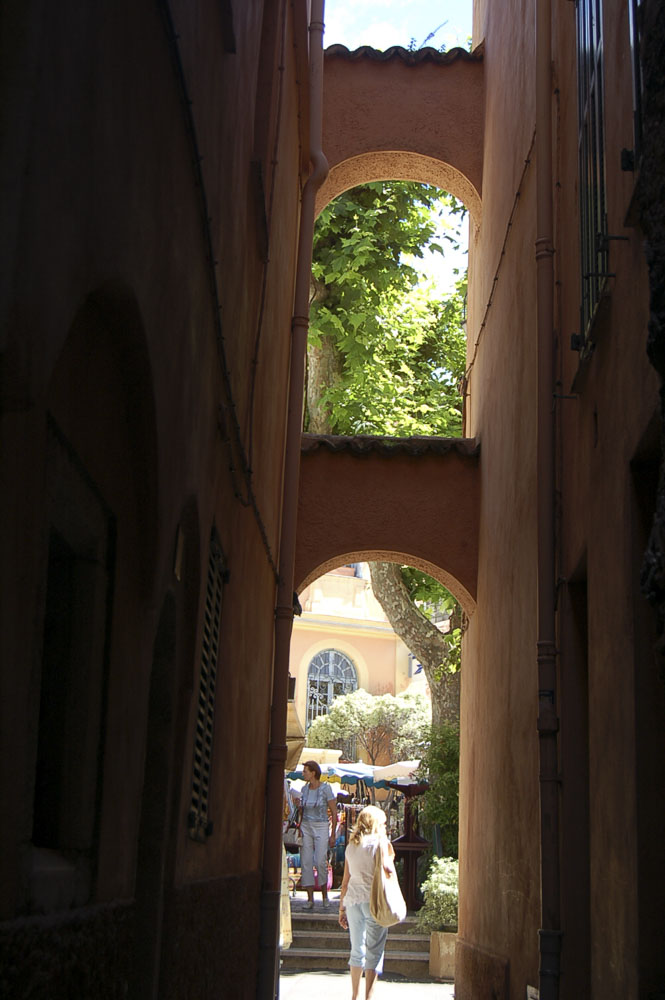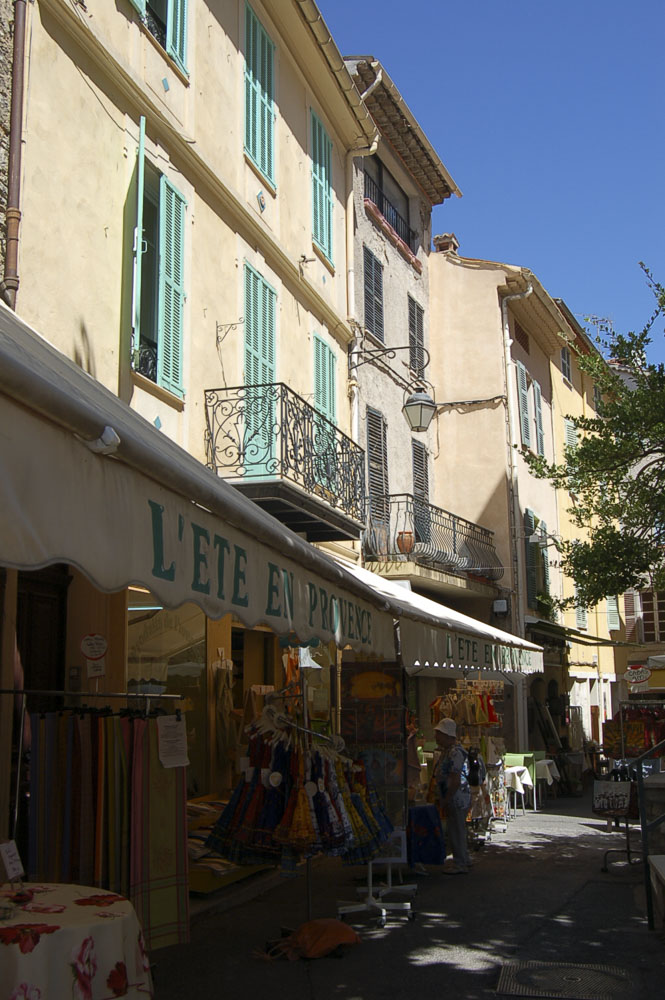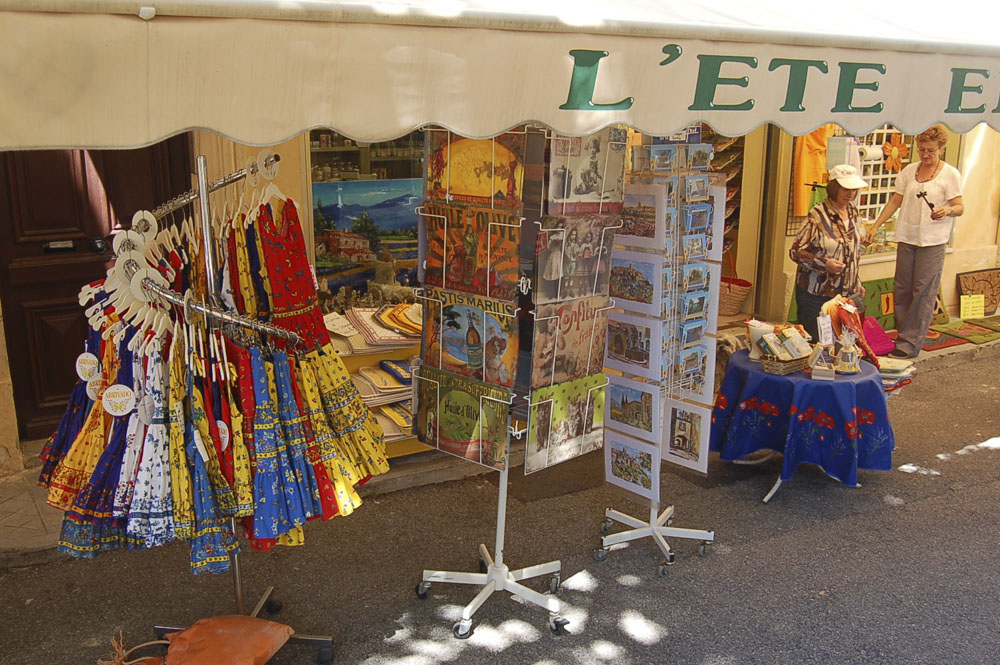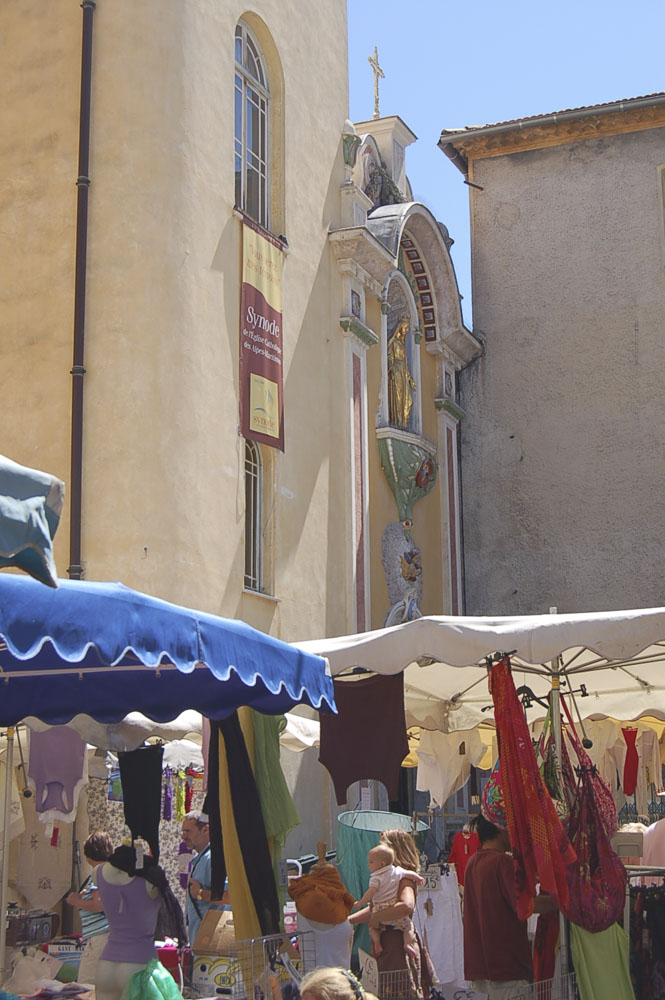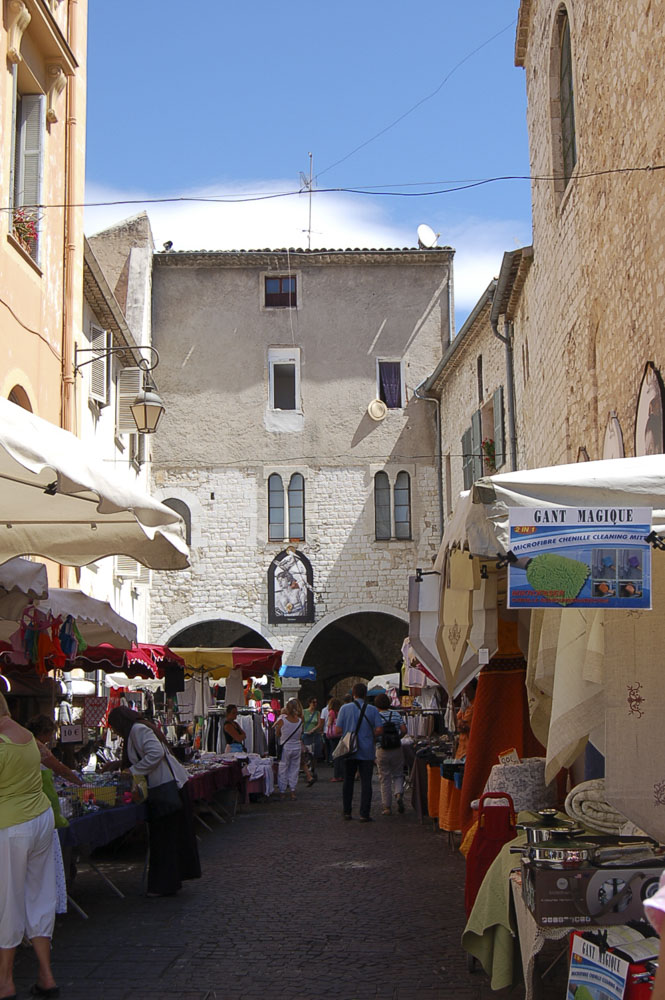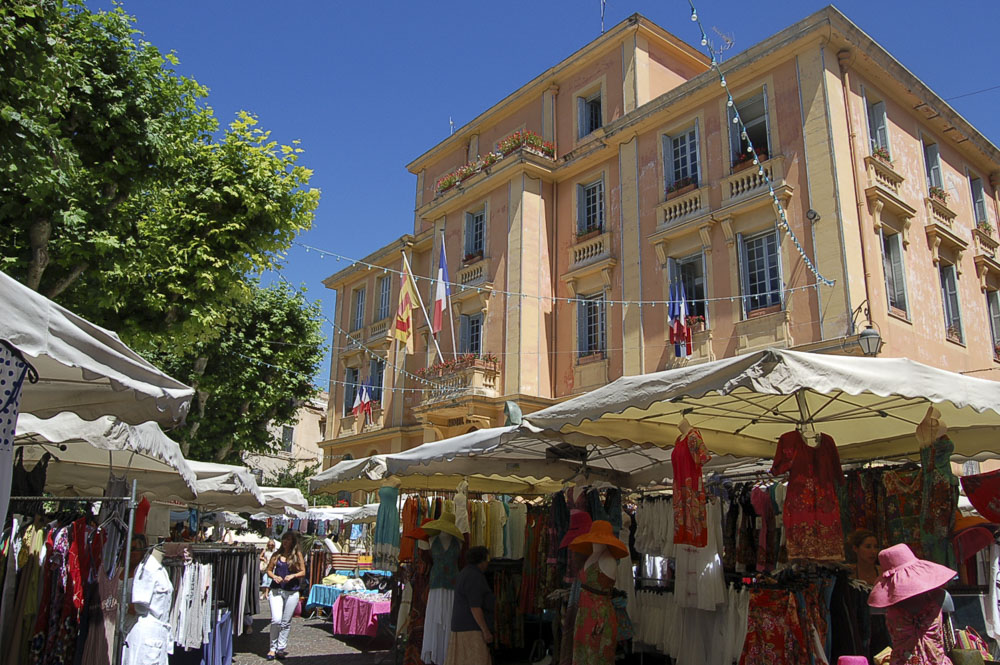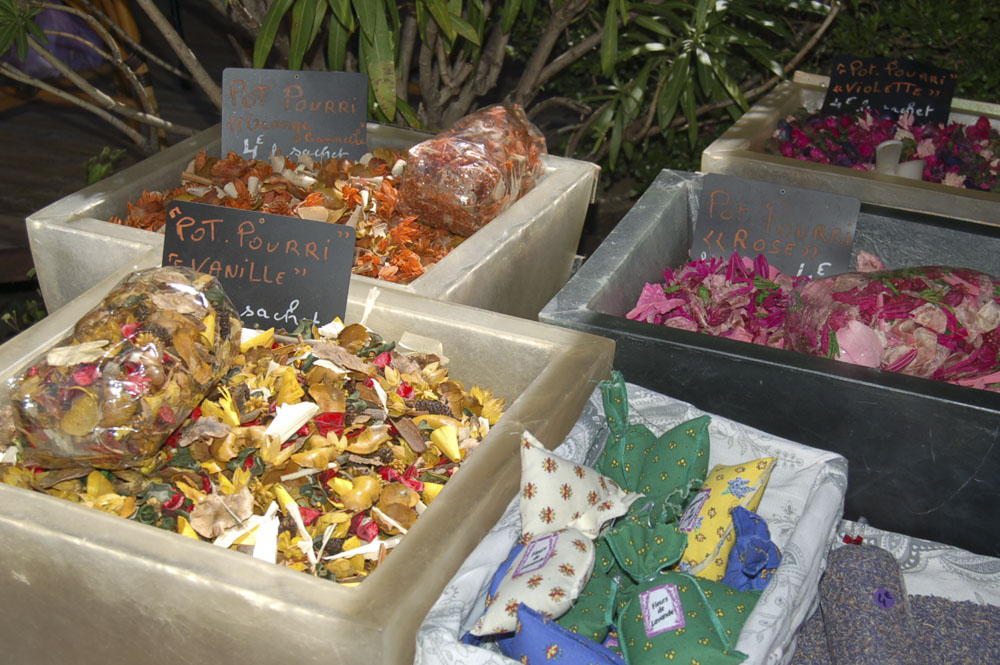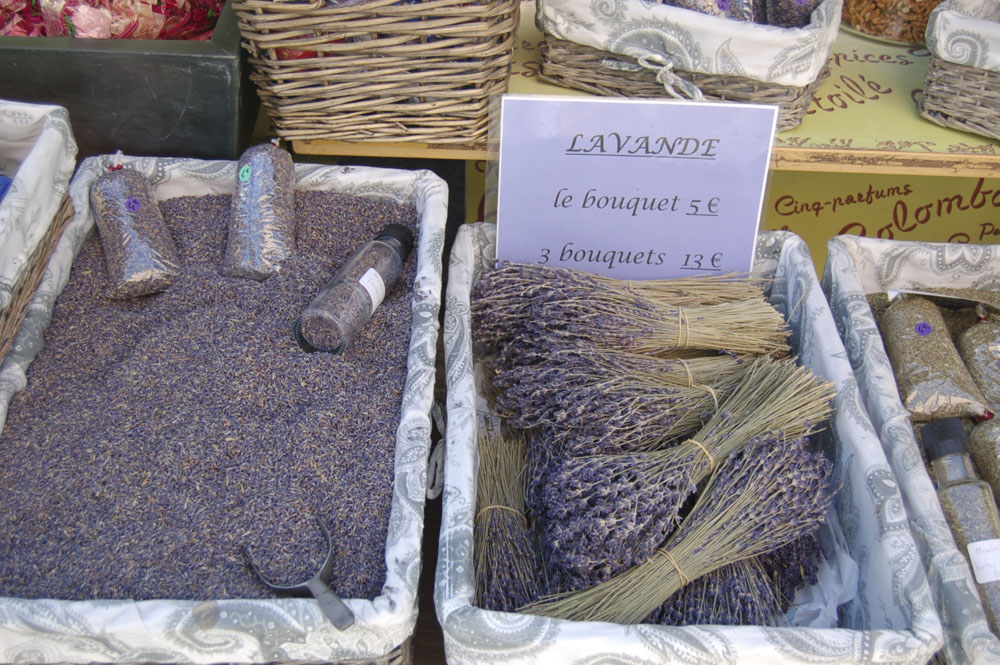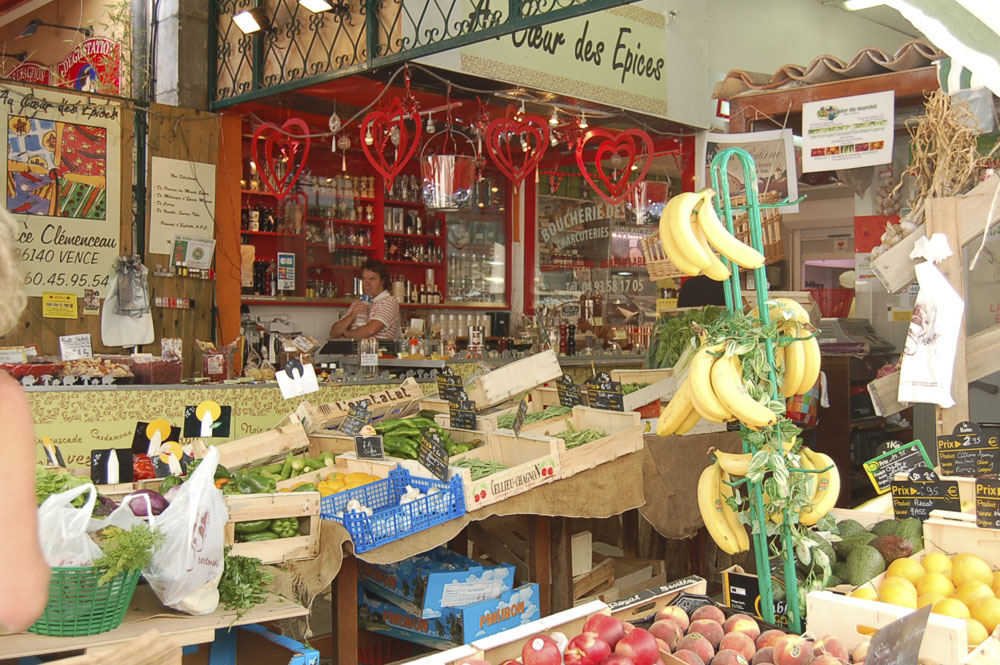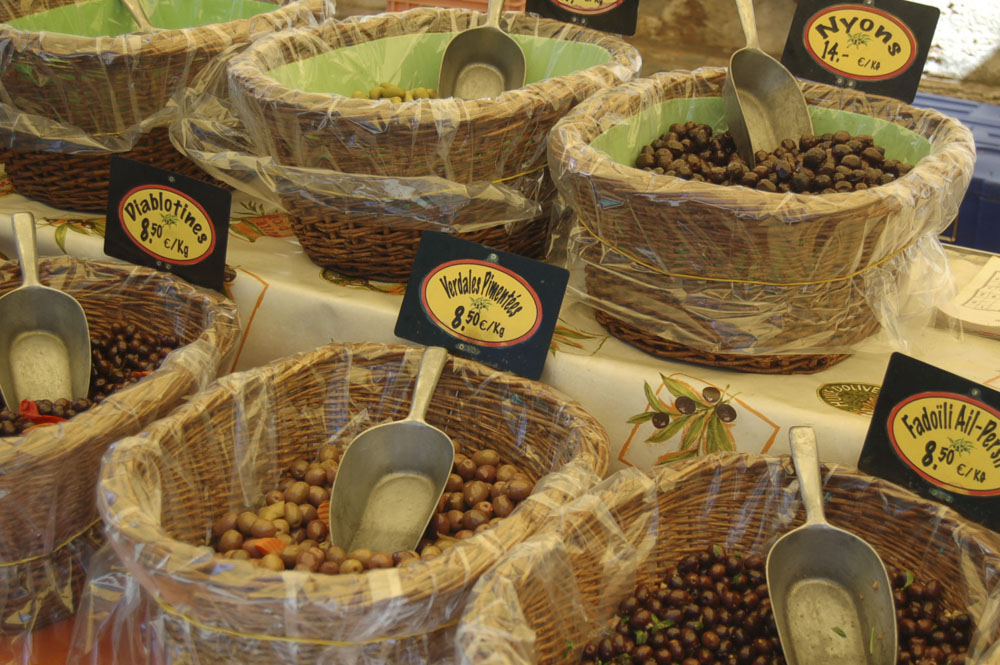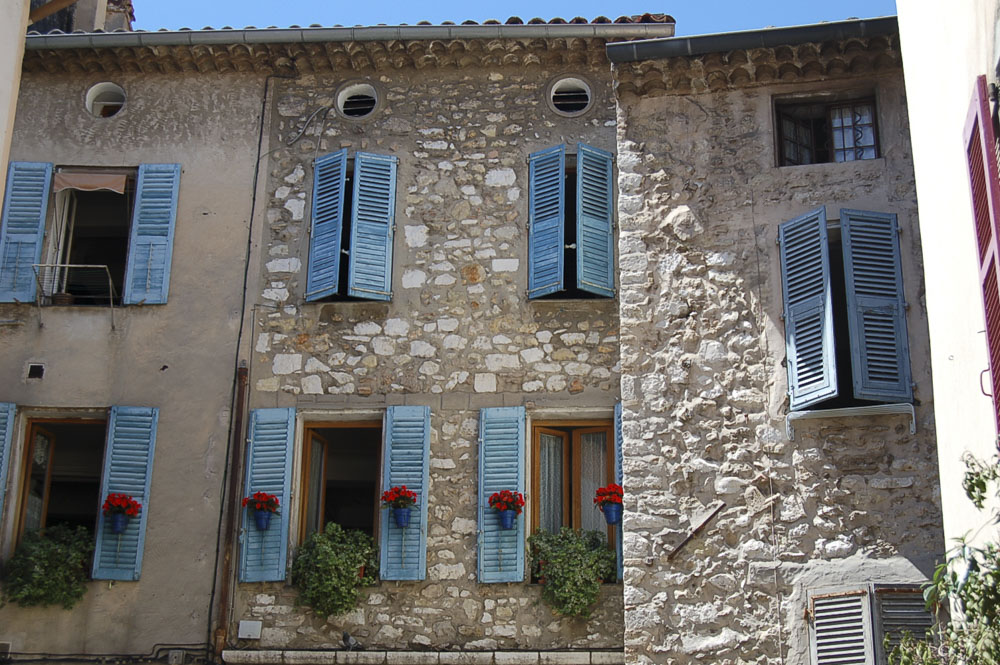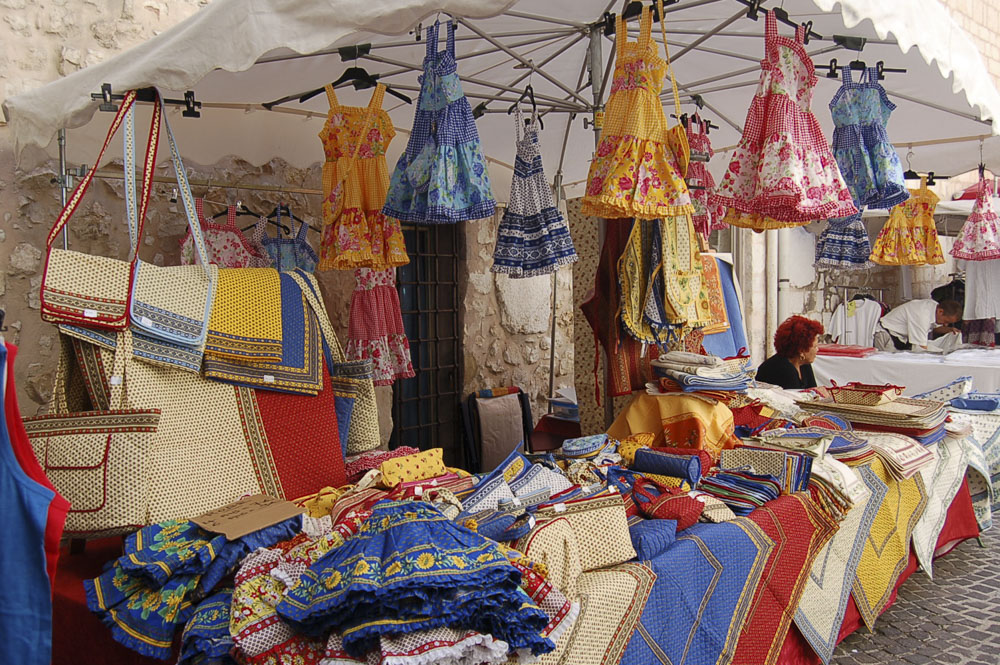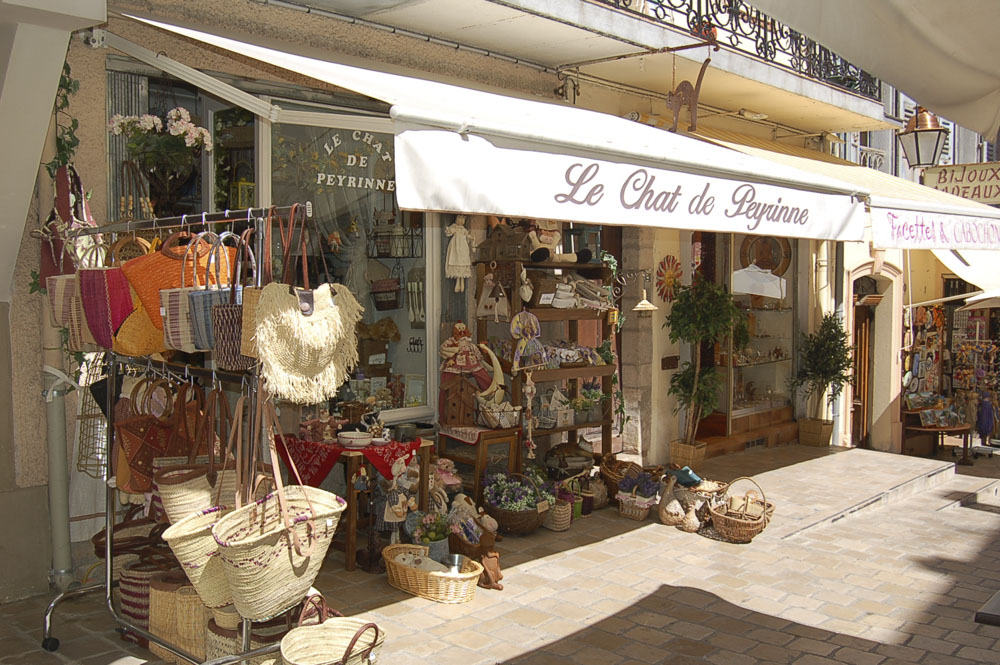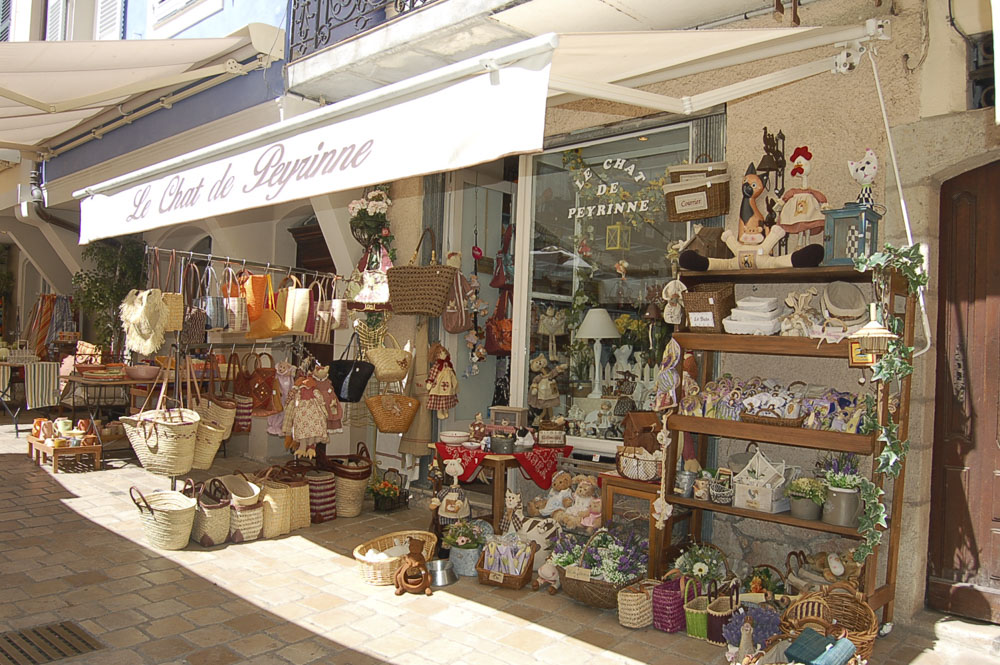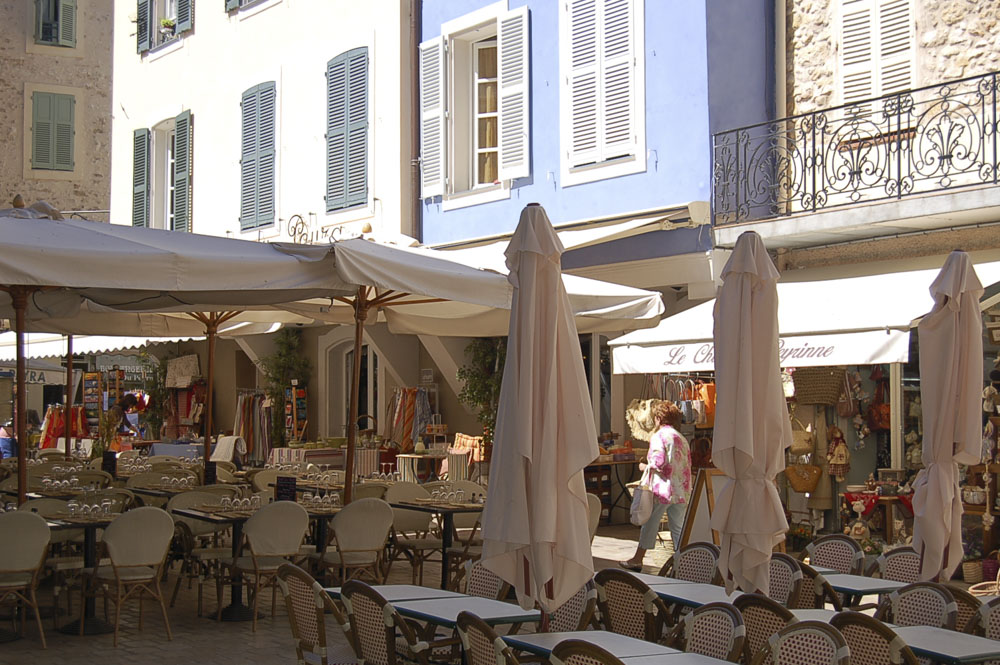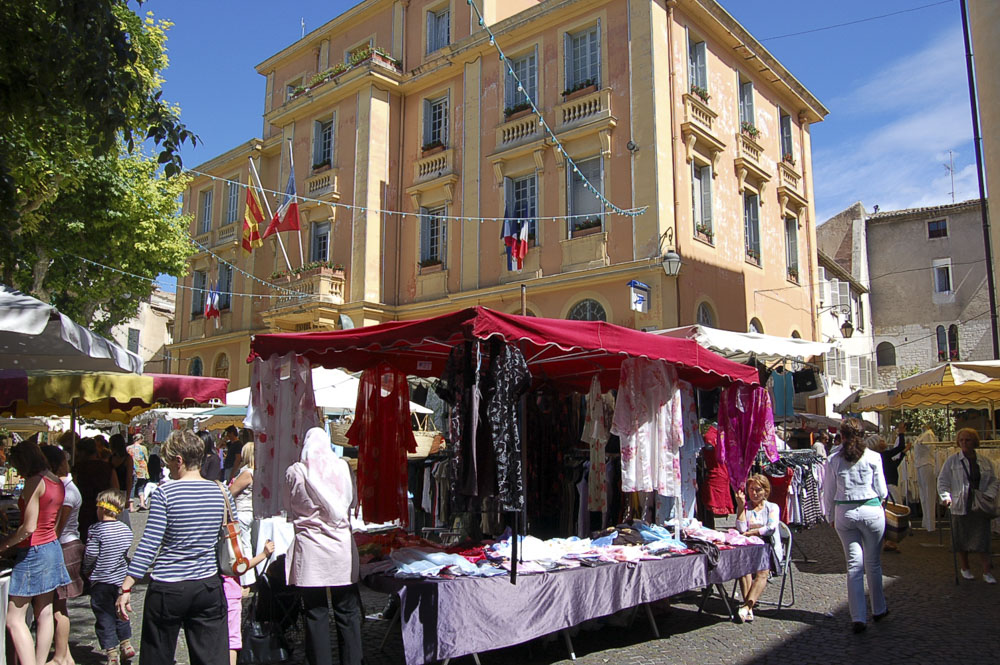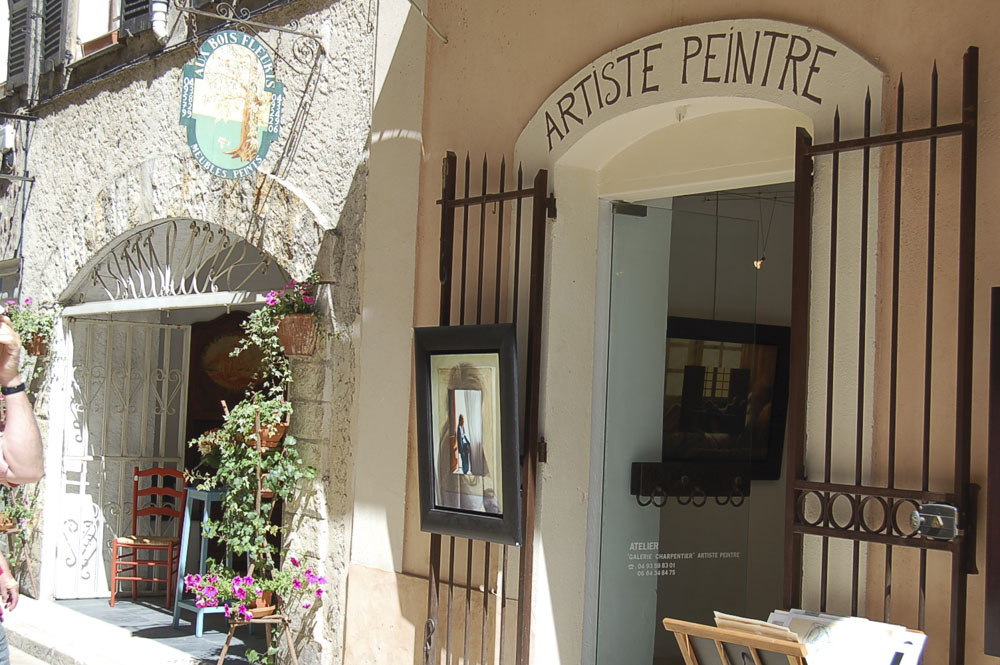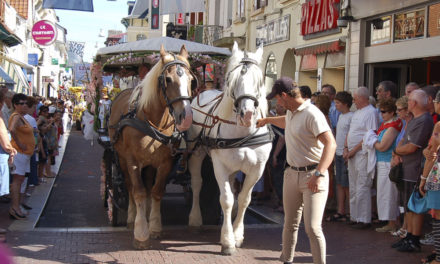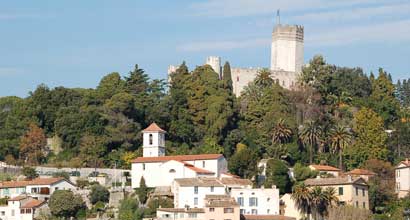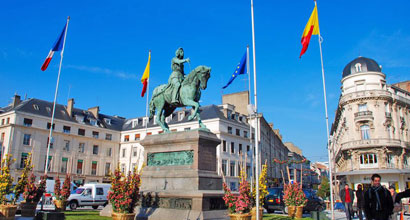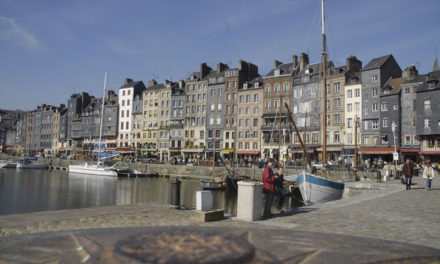Images – Copyright Informationfrance.
Vence was formerly the ancient Roman settlement of Vintium, and subsequently became the Bishopric and Seigneury of the Villeneuve family. This “City of Art”, is a lovely town sitting in the fresh air of the hills only a few km from Nice and Antibes. The town has conserved much of its historical heritage, and once you have entered the town, just wander around the maze of cobbled alleyways, passing underneath refreshing vaulted passageways, to admire Place du Peyra Renaissance and its famous fountain photographed innumerable times (1822). Don’t miss the Gothic house on Place Godeau, and on Place Thiers, the ash tree planted in memory of François 1st’s visit … in 1538!
Vence is a town of artists, with painters, sculptors and writers of many nationalities living and working here. The town is full of galleries and other examples of their work, with sculptures, decorated buildings and frequent (summertime) outdoor exhibits.
The 12th-century troubadour Pierre Vidal called Vence “le doux repaire” (the sweet nest) and in the 13th century, Dante Alighieri included Romeo de Villeneuve, Lord of Vence, in his Paradise. Other famous painters who worked in Vence include Dufy, Soutine, Matisse, Chagall and Dubuffet. In 1930, D. H. Lawrence spent his last days in Vence, and was buried here; he was later disinterred and taken to New Mexico. Another internationally known writer (and seer and doctor), Nostradamus, had something good to say: “Garden of Vence, marvel of Provence”.
Vence has been a market town for centuries, and the core of the food market is along the very narrow rue du Marché inside the walls. Flowers, fish, honey, bakeries, an endless variety of fresh vegetables, herbs and spices all add their colours and fragrances to the feeling of the markets. A ‘Foire’ (Fair) can be found on the Place Clémenceau inside the old village, or as part of the weekly ‘Foire’ at the Place du Grand Jardin.
La Foux. Even the water is special in Vence. Coming from a source just above the village, the clear mineral water of “La Foux” is available to the villagers from fountains in different parts of the village, including the beautiful 1822 fountain in the Place Peyra where an old marble plaque lists the amounts of the different minerals present. The water is considered so good that there are often lines at some of the fountains as people fill bottles and jugs to take home for consumption.
Book a Hotel in Vence
Historic Monuments
Cathedral of Nativité-de-Notre-Dame and its Treasure
(historic monument originally built in the 11th century).
Château des Villeneuve (16th-17th century).
Chapelle du Rosaire des Dominicaines 1951, stained glass windows designed and decorated by Matisse.
Chapelle des Pénitents blancs (historic monument dating back to 1614).
Chapelle Sainte-Elisabeth (Jean Canavesio fresco, 15th century, “the path to Paradise”).
Les Colonnes des Marseillais.
Boursac Mill (built in the 15th century, converted into a youth community centre).
Important prehistoric and ancient remains:neolithic burial site at Baou-des-Blancs (Ibis and Aigle caves), numerous oppida, section of the Via Ventiana, Roman remains at the Col de Vence forestry centre and even Gallo-Roman reliefs in the cathedral.
Office of Tourism
Office of Tourisme,
Place du Grand Jardin
Vence 06140
Tel : 04 93 58 06 38
Email : officedetourisme@vence.fr
Website : www.vence.fr


